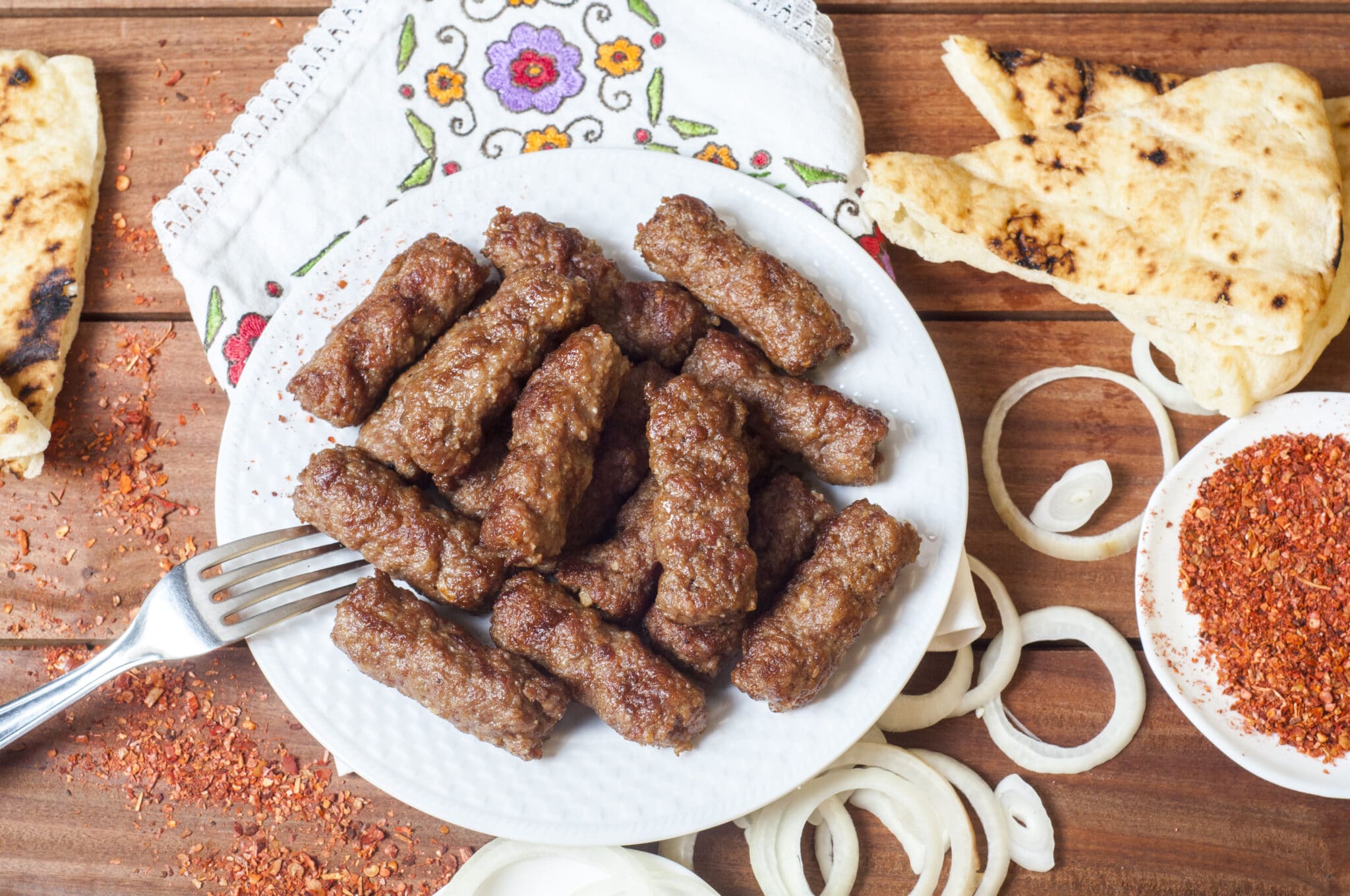
Ćevapi, a national dish of Serbia, is a culinary delight that has won the hearts of many. This traditional food item, often enjoyed at family gatherings and festive occasions, is deeply rooted in Serbian culture.
The story of Ćevapi begins with its origin. It’s believed to have been introduced to the Balkans during the Ottoman era. The dish quickly became popular among locals who appreciated its simplicity and rich flavors.
Our team at Remitly created this guide as part of our series that celebrates the traditional foods of our global customers.
The Origin of Ćevapi
Ćevapi’s history is as rich as its flavor. It’s thought to have originated from the Middle East and was brought to Serbia by Ottoman Turks during their rule in the Balkans. This explains why similar dishes can be found across countries that were once under Ottoman influence, like Bosnia and Herzegovina, and Montenegro.
Over time, Ćevapi evolved into a distinctly Serbian dish. Its preparation methods and ingredients were adapted to local tastes and resources, making it an integral part of Serbian cuisine.
Ingredients and Preparation of Ćevapi
Making Ćevapi involves mixing minced meat—usually a combination of beef, lamb or pork—with spices such as salt, pepper, and garlic. The mixture is then shaped into small sausage-like rolls before being grilled over charcoal for that distinct smoky flavor.
Once cooked, they’re typically served with flatbread known as lepinja or somun along with chopped onions and kajmak—a creamy dairy product similar to clotted cream. Some people also enjoy them with ajvar—a red pepper relish—or sour cream for added flavor.
Recipe for Serbian Ćevapi
Creating your own Ćevapi at home can be a rewarding experience. Here’s a simple recipe to help you get started.
Ingredients:
- 500g of minced beef
- 500g of minced pork or lamb
- 4 cloves of garlic, finely chopped
- Salt and pepper to taste
- Lepinja bread or pita for serving
- Chopped onions, kajmak, ajvar or sour cream for garnish
Instructions:
- In a large bowl, combine the minced beef and pork (or lamb). Add the finely chopped garlic, salt, and pepper. Mix well until all ingredients are evenly distributed.
- Shape the mixture into small sausage-like rolls—about the size of your index finger.
- Preheat your grill to medium heat. Place the Ćevapi on the grill and cook for about 4-5 minutes on each side or until they’re browned and cooked through.
- Serve hot with lepinja bread or pita. Garnish with chopped onions and your choice of kajmak, ajvar or sour cream.
Remember: The key to great Ćevapi is patience—take your time shaping the sausages and don’t rush the grilling process.
Variations of Ćevapi
While the basic recipe remains consistent throughout Serbia, regional variations do exist. In some areas like Leskovac, they prefer their Ćevapi spicy while others like Novi Pazar are known for their larger-sized sausages.
These variations not only add diversity but also reflect regional preferences and influences—making each version unique in its own way. Despite these differences, the love for Ćevapi remains universal across Serbia.
Serving Traditions
Ćevapi is more than just a meal—it’s a social event. It’s often served at gatherings where friends and family come together to enjoy good food and company. The dish is typically presented on a large platter, encouraging communal dining.
In restaurants, it’s common to see Ćevapi served in portions of five or ten pieces—depending on your appetite. They’re usually accompanied by sides like fries or salad, making it a complete meal that satisfies both the stomach and soul.
Popular Places for Authentic Ćevapi in Serbia
For those seeking authentic Serbian Ćevapi, there are numerous places across the country where you can indulge in this culinary delight. Belgrade, the capital city, boasts several well-known eateries such as “Čubura” and “Dva Jelena” that serve mouth-watering versions of this dish.
Other cities like Novi Sad and Niš also offer a variety of places where you can enjoy Ćevapi. Each place has its own unique take on the dish, giving you an opportunity to explore different flavors and styles.
A Glimpse into Serbian Cuisine
Serbian cuisine is diverse yet unified by its love for hearty meals that bring people together.
Meat Dishes in Serbia
Meat plays a central role in Serbian cuisine—with dishes like Pljeskavica (Serbian burger), Svinjska Pečenica (roast pork), and Karađorđeva Šnicla (breaded meat roll) being popular choices among locals.
Vegetarian Options in Serbia
While meat is prominent, there are also vegetarian options available such as Prebranac—a baked bean dish—and Punjene Paprike, which are stuffed peppers.
Serbian Desserts
Serbian desserts are equally delightful. Baklava, a sweet pastry made of layers of filo filled with chopped nuts and sweetened with syrup or honey, is a favorite. Another popular dessert is Palačinke—thin crepes often filled with jam, chocolate or cream.
Beverages in Serbia
When it comes to beverages, Rakija—a fruit brandy—is well known. For non-alcoholic options, there’s Boza—a fermented beverage made from maize and wheat.
In conclusion, Serbian cuisine offers a rich array of flavors that cater to different tastes and preferences. Whether you’re a meat lover or vegetarian, there’s something for everyone in this vibrant culinary landscape.
Visit the homepage, download our app, or check out our Help Center to get started.
